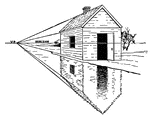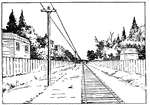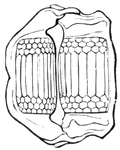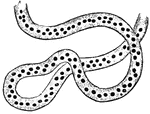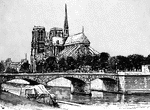
Mordecai Gist
(1742-1792) Major in the Maryline Military line that led forced against British forces
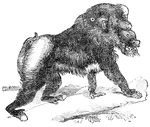
Mandrill
The mandrill is known for its various and brilliant coloration. Its coat is olive brown and it has a…

Tiger Beetles
Beetles form a large group of insects that number over 300,000 species. They all have hard wings which…

Caterpillar Hunter Beetles
Beetles form a large group of insects that number over 300,000 species. They all have hard wings which…
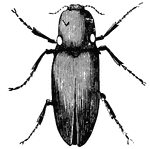
Lightning Spring Beetles
Beetles form a large group of insects that number over 300,000 species. They all have hard wings which…

Weevil
Beetles form a large group of insects that number over 300,000 species. They all have hard wings which…
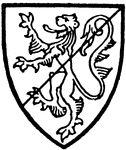
Fraunceys
Adam Fraunceys (14th century) bore Party gold and sable bendwise with a lion countercoloured. The parting…
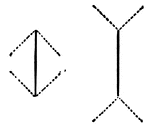
Visual Illusion: Line Length
Which line is longer? The black line on the right appears longer than the line beside it, but both lines…

Aesop's Fables
The Hare and the Tortoise. The tortoise crosses the finish line ahead of the hare. Slow and steady wins…
Centipede
Centipedes have flattened bodies, with one pair of legs to each segment. They are carnivorous.

Centipede
This Centipedes has a flattened bodies, with one pair of legs to each segment, but it has less than…
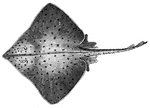
Skate
Common skate (ray). The skates and rays have a broad body, partly due to the merging of the body into…

Mackerel
The perch is typical of a large group of fishes, all of which have spiny rays. The perch is widely distributed…

Salmon
The salmon is well known both from its commercial importance and from its remarkable migrations up rivers…

Flounder
Flounder keep near the bottom, swimming on one side, and the two eyes are both on the side that is uppermost.
Gar
The gar fish has a cylindrical body covered by rhomboidal bony scales that are coated with enamel, making…
Sturgeon
the sturgeon has a cylindrical body covered by rhomboidal bony scales that are coated with enamel, making…
Bowfin
The bowfin, a primitive freshwater fish, also known as the freshwater dogfish is a voracious fish.

Lungfish
In the lungfish, the development of the air bladder as a lung is much more complete than others in the…

Romanesque Church
Line drawing of a large Romanesque church. The illustration is similar to the Imperial Cathedral Basilica…

Scorpion
Scorpions are characterized by having a distinctly segmented abdomen, which passes into the cephalothorax,…

Battle of Pittsburg Landing
Recapture of artillery by the First Ohio and other regiments under General Rousseau, April 7, 1862.…
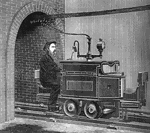
Siemens and Halske's Electric Engine
The first electric railway built in Berlin in 1879. The line was 2 feet wide and 2,700 feet long.
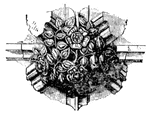
Boss
A boss is a projection in the shape of a segment of a sphere, or somewhat so whether for use or ornament,…

Boss
A boss is a projection in the shape of a segment of a sphere, or somewhat so whether for use or ornament,…
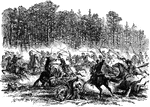
Sixth Regiment
"Gallant charge of the Sixth Regiment, United States Regular Cavalry, upon the Confederate Stuart's…
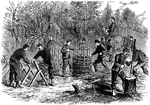
77th Pennsylvania Regiment
"Captain Muller's Battery Company of the Seventy-seventh Pennsylvania Regiment making fascines and gabions…

Battle of Cedar Mountain
"Gordon's and Crawford's Brigades driving the Confederate forces from the woods at the Battle of Cedar…
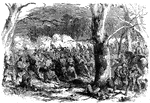
Storming of Fort Donelson
"Storming of Fort Donelson- decisive bayonet charge of the Iowa Second Regiment on the Confederate intrenchments…

Battle of Pea Ridge
"Battle of Pea Ridge, Ark., fought March 6th, 7th and 8th, 1862, between the Federal forces, 13,000…

Seventy-ninth Regiment
"Taking away the colors of the Seventy-ninth New York Regiment for insubordination and mutiny, Washington,…

Battle of Gaines's Mill
"Battle of Gaines's Mill, Friday, June 27th, 1862. At eleven o'clock each division, brigade, regiment…

Blue Ridge Pass
"The victory at Blue Ridge Pass, Sunday, September 14th, 1862- infantry charge, and rout of the Confederates.…

Fort Thompson
"View of New Berne, N. C., from the interior of Fort Thompson after its capture by the Federal forces-…

Battle of Savages Station
"Battle of Savages Station. Brigadier General Smith's division hotly engaged with the enemy, at noon,…

Battle of Cedar Mountain
"Battle of Cedar Mountain, fought Saturday, August 9th, 1862, between the Federal troops commanded by…
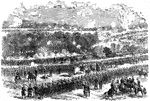
Battle of Malvern Hill
"Battle of Malvern Hill, near Turkey Bend, James River, Va., fought Tuesday, July 1st, 1862. The battle…

Landing at Parkersburg
"Landing of Federal troops at Parkersburg, Western Virginia. Parkersburg, Va., in 1861 was a thriving…

Battle of White Oak Swamp Bridge
"Battle of White Oak Swamp Bridge, Monday June 30th, 1862- Ayres's, Mott's and Randall's batteries checking…

Battle at Dam No. 4
"Battle at Dam No. 4, Potomac River, between Butterfield's brigade and a large Confederate force. A…

Blue Crab
"Several species of crabs are taken from Florida coastal waters, probably the most common being the…
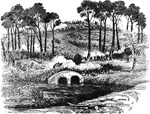
Battle of Antietam
"Battle of Antietam, Md. Burnside's division carrying the bridge over the Antietam Creek and storming…

Fort Thompson
"Bombardment and capture of Fort Thompson, thirteen guns, near New Berne, on the Neuse River, by the…

Encampment of Colonel Max Weber's Rifle Regiment
"Encampment of Colonel Max Weber's German Turner Rifle Regiment, Twentieth New York Volunteers, at Hampton…

Battle of Antietam
"Battle of Antietam, Burnside's Division, left wing- brilliant and decisive bayonet charge of Hawkins's…

Tybee Island
"Tybee Island, Savannah River, Ga.- Views of the lighthouse and barracks- destruction of the lighthouse…

Battle of Stone River
"Battle of Stone River, Tenn. Decisive charge and capture of Byrne's Confederate battery by the Seventy-eighth…
